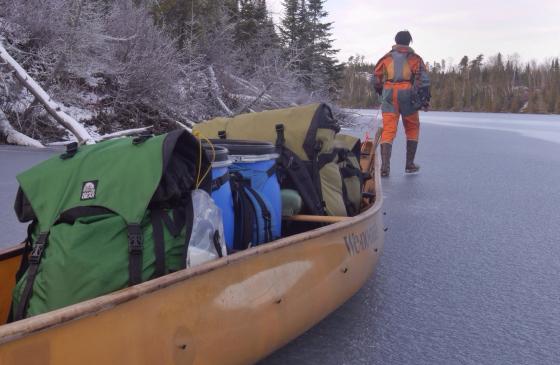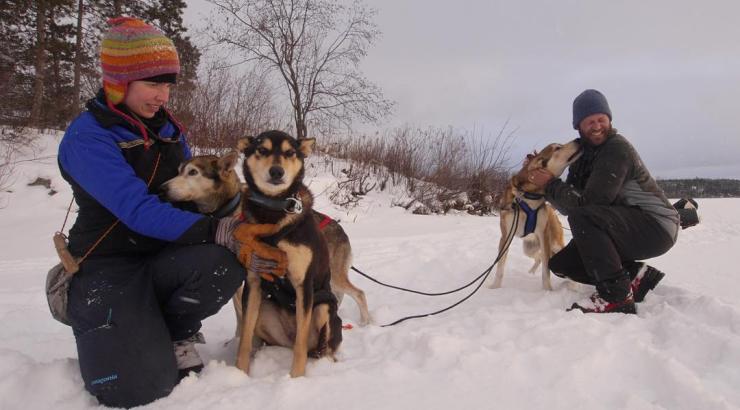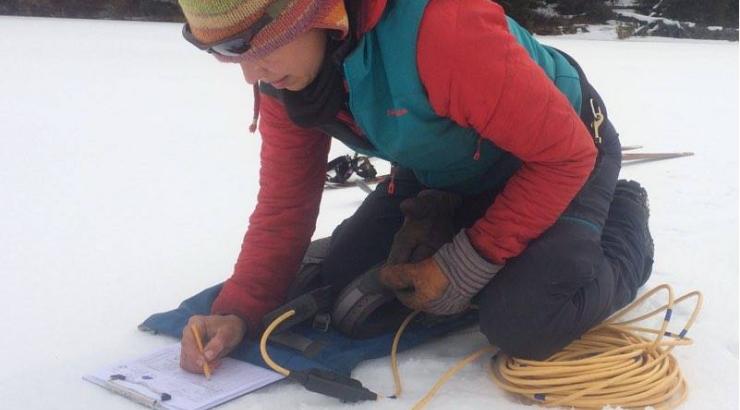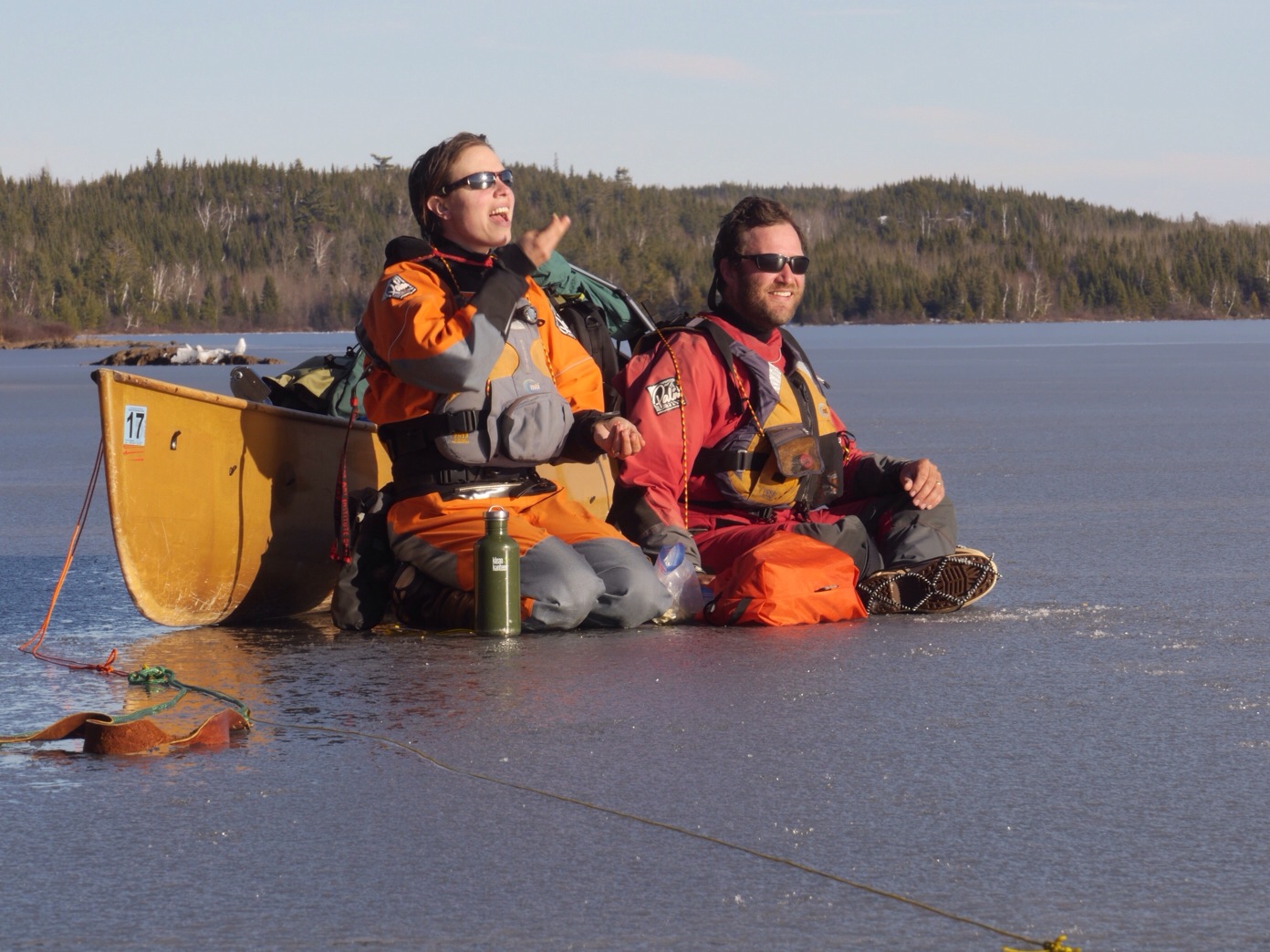 While we were getting ready to spend a year in the Boundary Waters people often asked us what we would do during "freeze up." Now we are in the middle of freeze up and we want to share with you what it is like to be in the Boundary Waters during this unique time and how we are transitioning from traveling on the water to traveling over the snow and ice.
While we were getting ready to spend a year in the Boundary Waters people often asked us what we would do during "freeze up." Now we are in the middle of freeze up and we want to share with you what it is like to be in the Boundary Waters during this unique time and how we are transitioning from traveling on the water to traveling over the snow and ice.
Amy and I are currently camped on Ensign Lake. Ensign Lake is covered with two to five inches of ice. Most of the lake is covered in enough ice for us to safely travel across. The lake is free of snow, so it is easy to walk across the ice.
We are using our canoe like a sled to haul our supplies across the ice when we move from one campsite to another. Once we get the canoe moving, it slides quite easily.
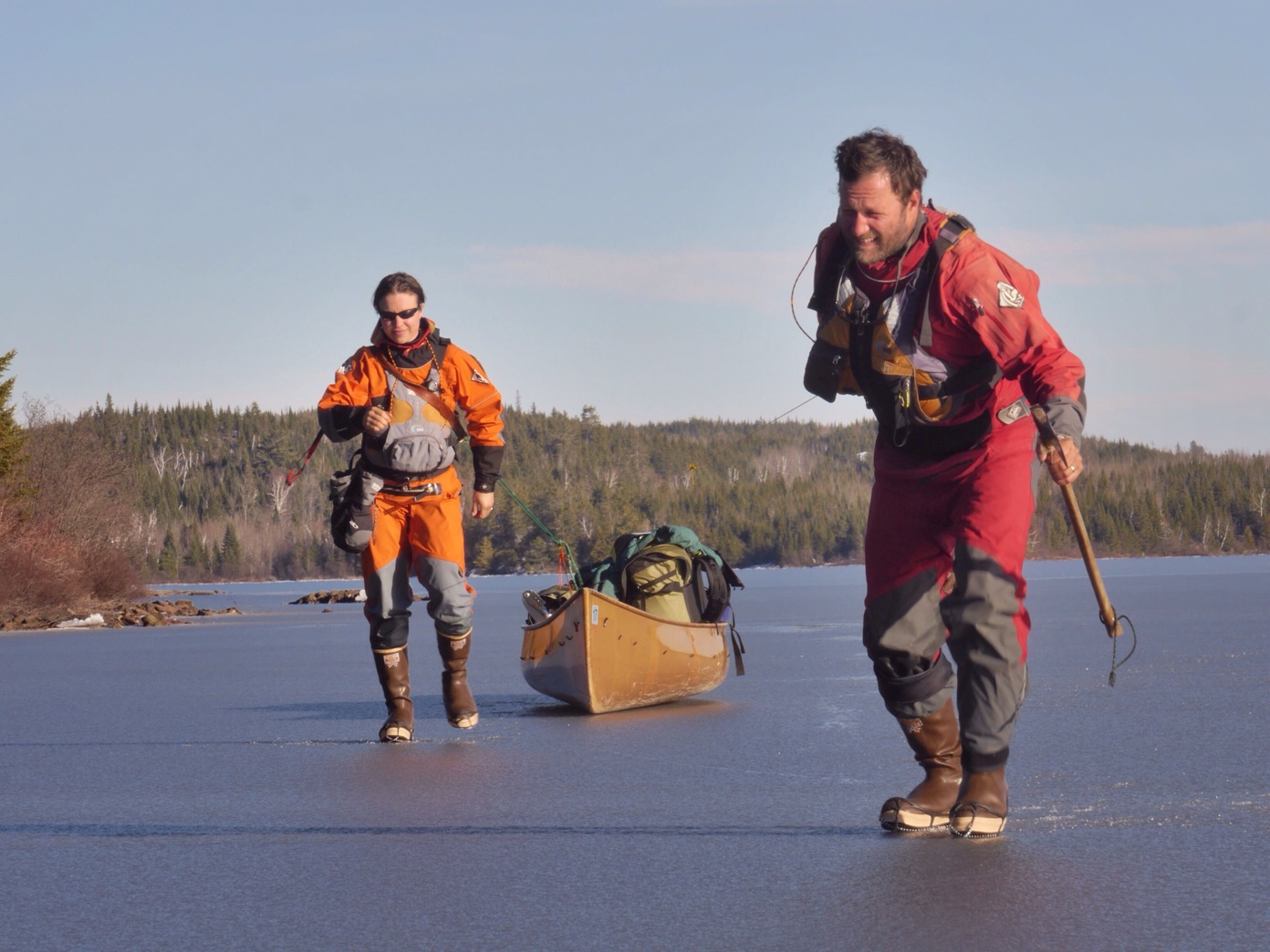 We have mini crampons that slip onto our shoes to help us walk across the ice without slipping and we each have a long rope attached to a harness that is tied to the bow of the canoe. Our ropes are different lengths so that we are spread out as we walk. When the ice is thin, it is important to spread out rather than walking close to each other or the loaded canoe.
We have mini crampons that slip onto our shoes to help us walk across the ice without slipping and we each have a long rope attached to a harness that is tied to the bow of the canoe. Our ropes are different lengths so that we are spread out as we walk. When the ice is thin, it is important to spread out rather than walking close to each other or the loaded canoe.
Ensign Lake has been frozen for almost three weeks, but shallow lakes like Ensign freeze earlier than deeper lakes. Many of the deeper lakes are partially frozen, or covered in very thin ice that is not thick enough to safely walk across. The largest deepest lakes in the Boundary Waters like Knife Lake are still basically ice-free.
 Yesterday we walked across Ensign and Splash Lakes to Newfound Lake. Ensign and Splash were covered in plenty of clear, strong ice, but Newfound Lake is over 40 feet deep. The ice was thinner, and we could see steam rising from the center of the lake signaling that a large portion of the lake is still covered in open water. We have about 10 days of food left and we are waiting for Newfound Lake and Moose Lake to freeze thick enough so that more food and our winter supplies can be safely brought in to us.
Yesterday we walked across Ensign and Splash Lakes to Newfound Lake. Ensign and Splash were covered in plenty of clear, strong ice, but Newfound Lake is over 40 feet deep. The ice was thinner, and we could see steam rising from the center of the lake signaling that a large portion of the lake is still covered in open water. We have about 10 days of food left and we are waiting for Newfound Lake and Moose Lake to freeze thick enough so that more food and our winter supplies can be safely brought in to us.
When volunteers bring in our next resupply, we will haul our canoe, paddles, lifejackets, other equipment that we don't need in the winter, and an accumulation of garbage (both our own and stuff we've found) and meet them close to the wilderness border. The volunteers will haul in our food, winter sleeping bags, skis and other winter equipment into the Wilderness on two toboggans made by Black River Sleds.
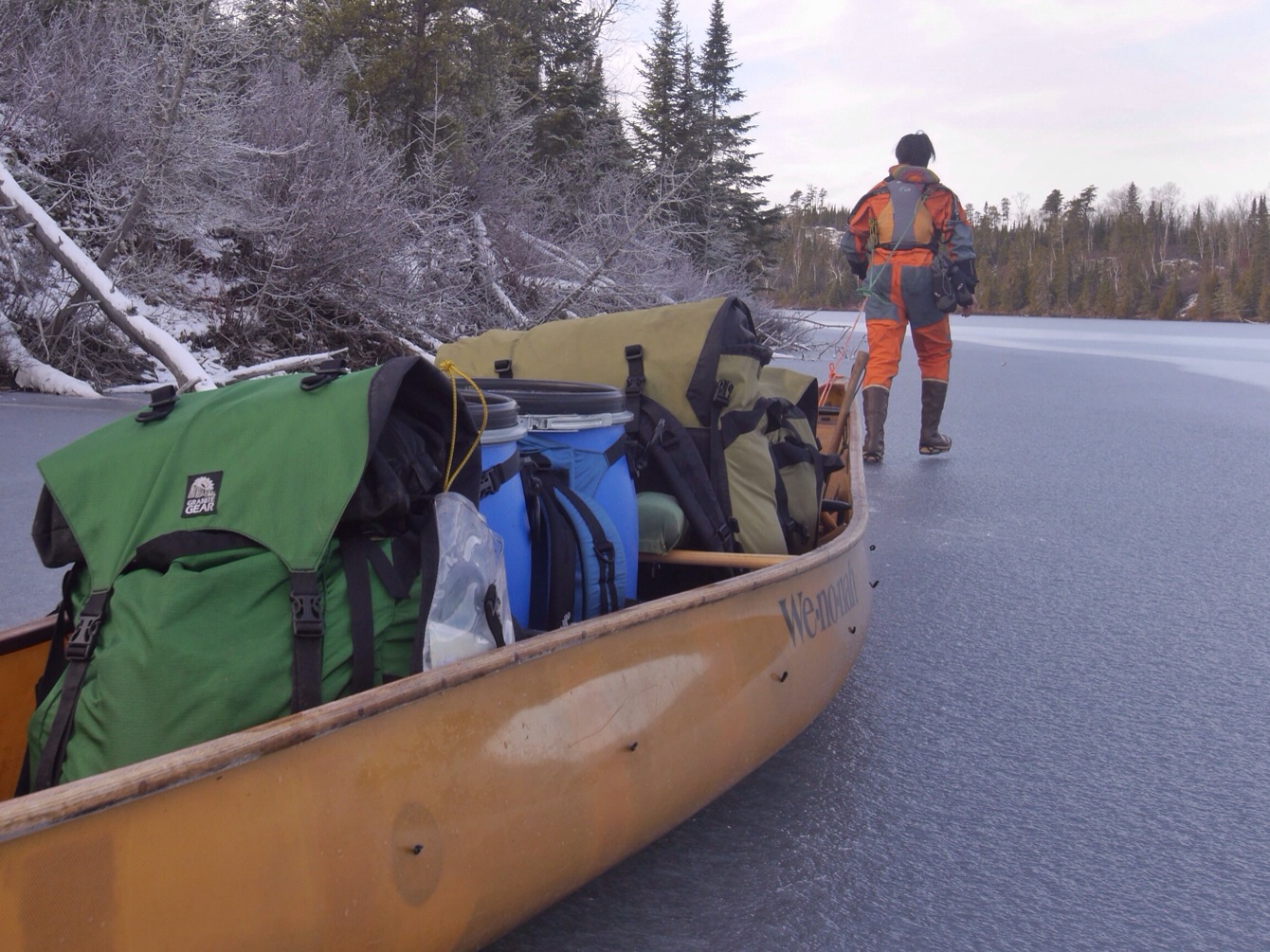 Over the last month we have not moved around a much as we did before the ice started forming. We have only changed campsites seven times during the last month. We are getting a little antsy and are looking forward to being able to travel more freely once snow and ice grip the Wilderness.
Over the last month we have not moved around a much as we did before the ice started forming. We have only changed campsites seven times during the last month. We are getting a little antsy and are looking forward to being able to travel more freely once snow and ice grip the Wilderness.
With that said, it has been a real pleasure being forced to slow down and really immerse ourselves in a sliver of the vast Wilderness that surrounds us. We have spent many hours watching the clouds float across the sky, listening to the ice sing, wolves howl and wind sweep over the ridges.
Sigurd Olson said, "Wilderness offers [a] sense of cosmic purpose if we open our hearts and minds to its possibilities."
Slowing down as the seasons change and allowing ourselves to soak in the majesty that surrounds us has allowed for meaningful reflection. A better understanding of who we are, how we fit into the untrammeled Wilderness that surrounds us and the world beyond its borders is perhaps the greatest gift that Wilderness offers us all.
We have spent thousands of days in Wilderness around the world, but being frozen in, forgetting timelines and schedules, and truly being in the Wilderness with no other agenda than to bear witness to it and fully immerse ourselves in it has allowed us to learn more about ourselves and appreciate the Boundary Waters more than ever.
Dave and Amy Freeman, 2014 National Geographic Adventurers of the Year, are dedicated to protecting the Boundary Waters from sulfide-ore copper mining proposed on its wilderness edge. In 2014, they paddled and sailed 101 days and 2,000 miles from Ely, MN, to Washington, DC, on the Paddle to DC. They are now spending a year in the Boundary Waters on A Year in the Wilderness. Follow their journey on social media (#WildernessYear) and by tracking the trip on their map. More A Year in the Wilderness blog posts.
